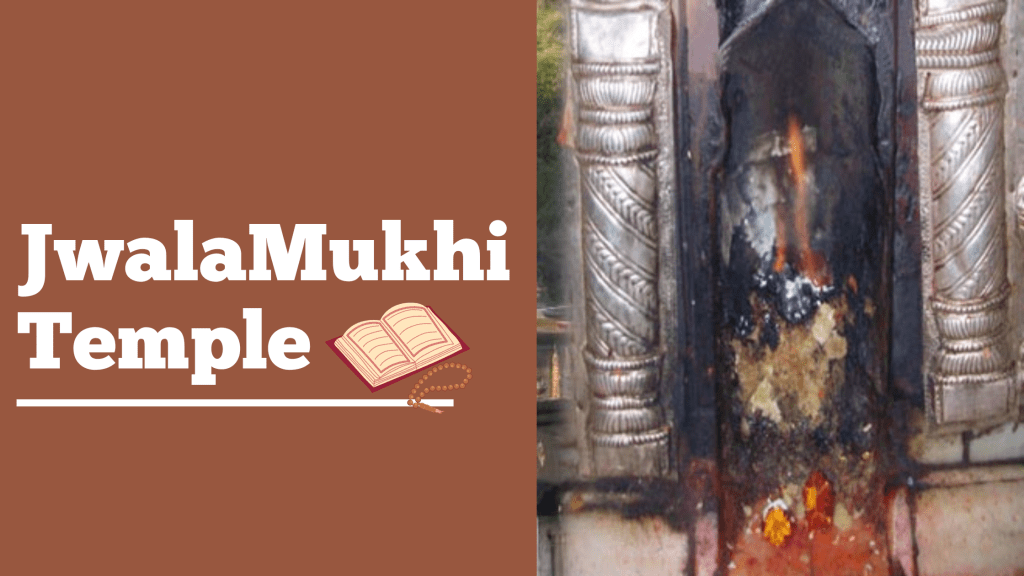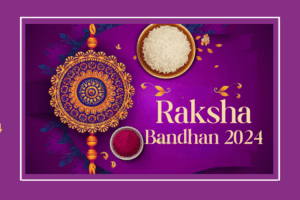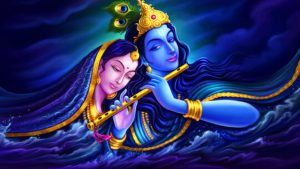Discovering Divine Tranquillity: Jwalamukhi Temple in Himachal Pradesh

Situated in the serene hills of Himachal Pradesh, the Jwalamukhi Temple is a sacred haven that beckons both pilgrims and curious travellers alike. This ancient temple, dedicated to Goddess Jwalamukhi, is a timeless testament to spirituality, culture, and the rich tapestry of India’s religious heritage.
Join us on a virtual journey as we explore the mystical allure of Jwalamukhi Temple and the treasures it holds.
Historical Background:
Steeped in history, Jwalamukhi Temple has roots that trace back to ancient times. It is situated in the embrace of the Shivalik range within the Kangra valley, it is known as “Kalidhar.” This temple is thought to be the inaugural construction by the Pandavas. Jwala Ji, a temple devoted to the “Goddess of Light,” graces Jawala Mukhi in the Kangra district of Himachal Pradesh.
The temple is believed to be one of the 51 Shakti Peethas, marking the spot where Goddess Sati’s tongue fell during Lord Shiva’s tandava (dance of destruction). The word “Jwala” means flame, and the temple is renowned for the natural, eternal flame that emanates from the rock – this is to say that Sati’s tongue fell at Jawalaji (610 m) and the goddess is manifested as tiny flames that burn flawless blue through fissures in the age-old rock.
Spiritual Significance:
It is believed that the Sacred Flames, known as Jwala, symbolise the Tongue of Sati and burn continuously. The Jwala Devi temple holds unparalleled significance as a centre of faith. Unlike traditional worship with deities or idols, this temple venerates a series of natural flames, or Jyotis, believed to be the embodiment of the Goddess and has been so for countless ages.
Thus, devotees flock to Jwalamukhi Temple to seek the blessings of Goddess Jwalamukhi, the fiery manifestation of Shakti or divine feminine energy. The temple complex exudes a tranquil ambiance, offering a respite from the hustle and bustle of daily life. Pilgrims often engage in prayer and meditation, finding solace in the divine energy that permeates the surroundings.
Architecture of Jwalamukhi Temple:
The temple’s architecture reflects the rich cultural heritage of the region. Though simple in design, the intricacies of the carvings and the traditional Himachali style are awe-inspiring. The sanctum sanctorum houses a copper pipe through which natural gas escapes, perpetually fueling the sacred flame. The temple’s surroundings provide a breathtaking backdrop of the Dhauladhar range, adding to the overall spiritual experience.
Significance of Shayan Aarti and Festivals:
The distinctive Shayan Aarti conducted at Jwalaji before bedtime stands out in its uniqueness. The Goddess’s bed is adorned with luxurious attire and ornaments during the Aarti. The initial segment takes place in the main temple dedicated to the Goddess, while the subsequent part unfolds in the “SEJABHAWAN,” where verses from ‘Sondarya Lahri’ by Shri Shakracharya are recited.
Jwalamukhi Temple witnesses an influx of pilgrims, especially during the Navaratri festival when the entire region comes alive with religious fervour. Devotees embark on a journey to offer prayers and seek blessings from the goddess. The vibrant atmosphere, accompanied by religious rituals and cultural performances, makes it an immersive experience for visitors.
Virtual Puja Experience,
Anytime, Anywhere.
Book Your Puja Now & Ensure A Spiritual Experience For You & Your Loved Ones.
Scenic Splendour and Tourist Attractions:
Situated about 30 kilometres south of Kangra, Jwalamukhi Temple allows visitors to revel in the scenic beauty of the Himalayan landscape. Surrounded by lush greenery and panoramic views, the temple provides a perfect setting for introspection and communion with nature.
Kangra Fort:
Explore the historic Kangra Fort, one of the largest forts in the Himalayas, with a rich history dating back to the ancient era.
Chintpurni Temple:
Visit the Chintpurni Temple, another important pilgrimage site dedicated to Goddess Chinnamastika, just a short distance away from Jwalamukhi.
Baijnath Temple:
Baijnath Temple, dedicated to Lord Shiva, is renowned for its ancient architecture and spiritual significance. It’s located near Jwalamukhi and offers a tranquil setting.
Maharana Pratap Sagar:
Enjoy the scenic beauty of Maharana Pratap Sagar, also known as Pong Dam Lake. This reservoir is a haven for birdwatchers and water sports enthusiasts.
Masroor Rock Cut Temple:
Visit the Masroor Rock Cut Temple, an archaeological marvel featuring a complex of monolithic rock-cut temples dating back to the 8th century.
Nadaun:
Explore Nadaun, a town with historical significance, known for its ancient temples and the ruins of a fort.
Jwalamukhi Market:
Take a stroll through the local markets around Jwalamukhi to experience the vibrant culture and pick up traditional Himachali handicrafts.
Baglamukhi Temple:
Pay a visit to the Baglamukhi Temple, dedicated to Goddess Baglamukhi, known for its unique architecture and spiritual ambiance.
Dharamshala and McLeod Ganj:
These nearby towns offer a blend of Tibetan and Indian cultures, along with the opportunity to explore Tibetan monasteries, handicraft markets, and scenic landscapes.
Pragpur Heritage Village:
Experience the charm of Pragpur, a heritage village with cobbled streets, old-style homes, and historical architecture.
Palampur:
Known for its tea gardens and scenic landscapes, Palampur is a great place to relax and enjoy the natural beauty of the region.
Bir Billing:
For adventure enthusiasts, Bir Billing is a famous paragliding destination, offering breathtaking views of the Dhauladhar range.
Exploring these attractions will provide a well-rounded experience of the cultural, historical, and natural beauty that surrounds the Jwalamukhi temple in Himachal Pradesh.
DID YOU KNOW?
1. Underground Passages:
Rumours persist about the existence of secret underground passages beneath the temple. The purpose and destination of these passages remain unknown, adding an air of intrigue to the temple’s architecture.
2. Miraculous Healing Powers:
Locals and devotees believe in the temple’s healing powers. It is said that the flames have the ability to heal various ailments, and pilgrims often come seeking divine intervention for health issues.
3. Significance of Golden Parasol (chattar) :
Another legend speaks about the Mughal Emperor Akbar. It is believed that he attempted to quell the flames by covering them with an iron disk and directing water towards them. Despite his efforts, the flames kept burning, defying all attempts. In response, Akbar offered a golden parasol (chattar) at the shrine. However, his scepticism towards the goddess’s power led to the gold transforming into an unknown metal. Surprisingly, this incident deepened his faith in the deity. The shrine attracts thousands of pilgrims throughout the year, seeking to fulfil their spiritual yearnings.

Travel Information:
The temple opens from 5am – 10pm (summers) and 6am – 9pm (winters).
For those planning a visit to Jwalamukhi Temple, it’s advisable to check the local weather conditions and plan the trip accordingly. The temple is accessible by road, and the journey itself offers breathtaking views. It’s recommended to respect the sanctity of the temple premises and follow the customs and traditions observed by the locals.
How to reach the Jwalamukhi temple, Himachal Pradesh?
By Air:
-The nearest airport is Gaggal in Himachal Pradesh, approximately 50 km from Jwalaji.
-Chandigarh Airport is around 200 km away.
-Shimla Airport is approximately 160 km from the destination.
-The distance from Kullu Airport in HP is about 250 km.
-The national and international airport in Delhi is roughly 480 km away.
By Train:
-The nearest narrow-gauge railhead is Jwalaji Road Ranital, situated 20 km from the shrine.
-The closest broad-gauge railhead is Pathankot, approximately 120 km away.
-Chandigarh Railway Station is at a distance of 200 km.
By Road:
-Well-maintained roads connect the shrine to Delhi, Chandigarh, and Dharamshala.
-Taxis can be easily hired from these locations, all of which offer a picturesque journey through hilly terrain.
-Regular state transport bus services operate from major cities in Punjab, Haryana, New Delhi, and J & K.
-The shrine enjoys good road connectivity, with frequent bus and taxi services. Deluxe coaches are also available at various locations.
Final Thoughts:
Jwalamukhi Temple in Himachal Pradesh isn’t just a religious site; it’s a journey into the heart of spirituality, where ancient traditions coalesce with the natural beauty of the Himalayas. Whether you are a devoted pilgrim or a traveller seeking a glimpse into India’s cultural richness, the temple’s mystique is sure to leave an indelible mark on your soul. Embrace the divine tranquillity of Jwalamukhi Temple and let its eternal flame light the path to spiritual awakening.
For more such information on astrology, puja rituals, and temples, download the VAMA App.





